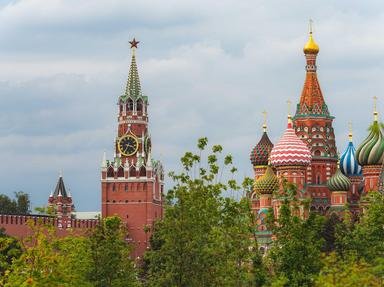Quiz Answer Key and Fun Facts
1. The Seventeenth Century has been described as the Age of the Cossacks. What is the usual translation of this term in reference to the people to whom it was applied?
2. What was the primary motivation for the expansion of the Tsardom of Russia to include Siberia?
3. The first major attempt to colonize Siberia occurred in the 16th century, when Yermak Timofeyevich led a force of Cossacks, along with Lithuanian and German slaves, into the territory controlled by Kuchum Khan. What was the outcome of this expedition?
4. What was the major mode of transport for Russian explorers and settlers travelling eastwards across Siberia?
5. Siberian tribes welcomed the arrival of the Russians, and the luxuries it brought them.
6. What was the major reason for the population decline of indigenous Siberians during the 17th century?
7. Siberian settlements started as military posts, but eventually developed into towns and cities. Which of these was settled last?
8. Russian expansion eastwards was generally unhindered during the 17th century until they made contact with the Chinese settled along the river which was to become the border between the two nations. What river was this?
9. With what foreign power did the Russians negotiate the Treaty of Nerchinsk in 1689?
10. In 1648, Semyon Deshnyov sailed from the Pacific Ocean north to the Arctic Ocean, but reports of this did not reach Europe, and the strait was later named after the Danish-born Russian navigator who repeated the passage in 1728. What strait is this, which marked the eastern limit to the Russian expansion through Siberia?
Source: Author
looney_tunes
This quiz was reviewed by FunTrivia editor
gtho4 before going online.
Any errors found in FunTrivia content are routinely corrected through our feedback system.
